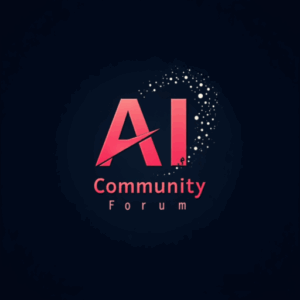Microsoft is setting the stage to change the way the web functions, with a focus on AI agents to drive digital engagement. At the heart of this is what CTO Kevin Scott calls the ‘agentic web’, a connected layer where AI agents can interact, reason, and evolve.
At Microsoft Build 2025, the tech giant made it clear that AI agents are not just features, they’re the future. With updates across Azure AI Foundry, new protocols like MCP, and tools like NLWeb, Microsoft is wielding it all together.
The focus now is not just on building smarter agents, but on giving them memory, context, and the ability to operate securely at scale. To begin with, Microsoft announced the general availability of developer essentials in Azure AI Foundry, expanding its platform for building and deploying agents and applications.
The update introduces new tools and services that streamline model selection, fine-tuning, deployment, and monitoring for AI workloads across cloud and edge.
At a media briefing, Scott said agentic software use has grown quickly, with the Microsoft ecosystem’s daily active users rising about 215% in the past year, but he believes the world is still not using these AI systems to their full potential.
He expressed his desire to build a web for AI agents, similar to the way hypertext protocols helped spread the internet in the 1990s. Scott made it clear that for AI agents to be truly useful, they must connect broadly.
He is excited about what’s coming next. “I wish I was 25 years old again, because, like, all I had was Moore’s law, and it’s a piece of crap compared to what’s happening right now.” He shared an anecdote where his 16-year-old daughter built an app, along with her friends in school, using AI, without any prior coding experience.
He said that one “quite conspicuously missing” piece from current agents is memory. Scott explained that agents often feel “very transactional” because they lack the ability to retain and build on their previous interactions.
Drawing an analogy to biological memory, which is imprecise but refines recall using cognitive tools, Scott outlined the need for agentic memory that offers “precise and broad recollection.” He added that challenges include limited context windows and information fragmentation.
MCP to the Rescue
In Azure AI Foundry, developers can host a single agent or orchestrate a group of agents, expose them through the Agent-to-Agent (A2A) protocol, and connect them to other services using the Model Context Protocol (MCP) or OpenAPI.
The company said that quick-start templates, VS Code integration, and GitHub workflows reduce the time from idea to production from weeks to minutes.
Moreover, agent development also integrates with Microsoft services like Bing, SharePoint, and Azure AI Search, and includes support for automation via Logic Apps, Azure Functions, and custom tools.
Developers can now access over 1,900 models, including Grok 3 and Grok 3 mini from xAI. A new model leaderboard and smart router help select models based on quality, cost, and latency requirements. “We saw up to 60% cost savings with similar accuracy when using the router versus direct access to GPT-4.1,” the company said.
Besides, Microsoft has also announced an early preview of Model Context Protocol (MCP) integration in Windows 11, positioning it as a foundational layer for secure and interoperable agentic computing.
“MCP is kind of like HTTP. It is a protocol where you can connect to a service or someone who’s got a piece of content they want to make agent-accessible,” said Scott, adding that it is easy to implement.
He stressed the importance of open, ubiquitous protocols, saying, “It kind of doesn’t matter, like, which approach you choose, just as long as you get to the thing that’s really ubiquitous as quickly as humanly possible.
“It means that your imagination gets to drive what the agentic web becomes, not just a handful of companies that happen to see some of these problems first,” Scott said.
Complementing this, Microsoft introduced NLWeb, an open-source project that turns any website into a natural language interface. NLWeb lets developers use models of their choice with their own data to make site content queryable via natural language, much like an AI assistant or Copilot.
Crucially, every NLWeb instance doubles as an MCP server, enabling websites to expose their content directly to agents in the MCP ecosystem. Microsoft envisions NLWeb playing a role similar to HTML in the original web, becoming a key building block of the agentic web by making content widely discoverable and accessible to AI agents.
Safe and Secure
On the larger picture, Azure AI Foundry is envisioned as a factory for AI applications and agents, providing a platform for building and deploying AI applications with security and trust built in.
During the media briefing, Microsoft executive vice president Jay Parikh shared that Bill Gates was excited by the idea of an “agent factory,” which resembles the “Software Factory” concept he envisioned back in 1975.
He said CoreAI is really trying to reimagine the end-to-end developer experience using AI, and then building on a platform that becomes a factory for these AI applications and agents. “We’re embedding and we’re making sure that security and trust are baked in right from the start.”
As part of this broader vision, Microsoft announced the public preview of Microsoft Entra Agent ID. This first release introduces a unified directory that brings together all AI agent identities created through tools like Microsoft Copilot Studio, Azure AI Foundry, and Microsoft Security Copilot.
Whether an agent is built by a developer or a business user, identity admins can now view and manage them centrally in the Microsoft Entra admin center, with security and trust built in from the beginning.




